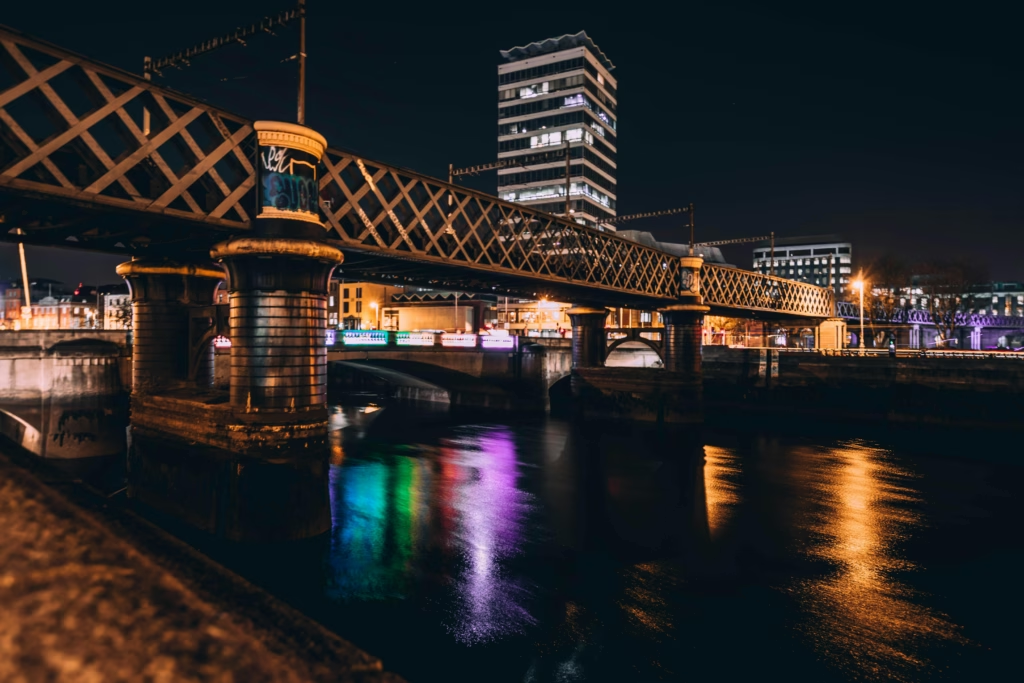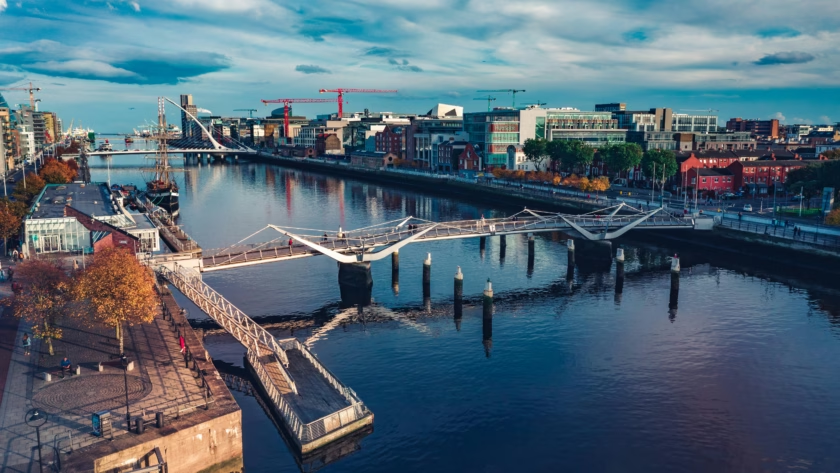Dublin is a city steeped in history, vibrant with culture, and famous for its friendly locals. Yet, many travelers and prospective residents ask, “Is Dublin expensive?” The short answer is yes, Dublin is expensive, compared to other European cities. However, in this guide, we’ll explore every facet of Dublin’s costs—from accommodation and dining to transportation and entertainment—and provide you with actionable tips on how to enjoy this enchanting city on any budget. Whether you’re visiting for a few days or planning a longer stay, read on for up-to-date insights and money-saving strategies to make the most of your trip without breaking the bank.
Understanding Dublin’s Price Landscape: Why Dublin is so expensive?
What Drives Dublin’s Costs?
Dublin consistently ranks among Europe’s pricier capitals, and several key factors contribute to its reputation:
- Housing Shortage: Dublin’s high demand for limited rental properties pushes up the cost of accommodation significantly.
- Economic Boom: With a booming tech industry and multinational companies like Google and Facebook setting up regional headquarters here, wages and daily expenses have risen.
- Tourism Demand: As one of Europe’s top tourist destinations, popular attractions and a bustling nightlife further drive up prices.
- Operational Costs: Higher rent, labor, and supply-chain costs in the Republic of Ireland contribute to elevated prices in areas such as supermarkets and dining.
These factors answer questions like “Why is Dublin so expensive for tourists?” and “How expensive is Dublin compared to London?”

Breaking Down the Cost of Living in Dublin
Below is a table comparing average monthly expenses for a single person in Dublin with key expense categories. (Data from sources like Numbeo and Expatistan provide a solid baseline.)
| Expense Category | Average Cost (Dublin) |
| Rent (1-bedroom apartment, City Centre) | €2,000 – €2,500/month |
| Rent (1-bedroom apartment, Outside Centre) | €1,600 – €2,000/month |
| Utilities (Electricity, Water, Heating, etc.) | €150 – €200/month |
| Internet & Mobile | €50 – €70/month |
| Groceries | €300 – €450/month |
| Meal at an Inexpensive Restaurant | €15 – €20 per meal |
| Pint of Beer (Pub) | €6 – €7 each |
| Public Transport (Monthly Pass) | €120 – €150 |
Note: Prices vary by neighborhood and personal lifestyle.
For families, these costs naturally increase. For example, a family of four might spend roughly €5,500 – €7,300 per month, depending on location and lifestyle choices. Detailed cost breakdowns can be found on sites like LivingCost.org.
Comparing Dublin and London: Is Dublin More Expensive?
Many travelers compare Dublin with London, asking “is Dublin or London more expensive?” Although both cities have high costs, Dublin often ranks slightly lower in accommodation and dining when compared with central London. However, the overall cost can be comparable depending on your travel style and spending habits.
Comparing Dublin travel costs With Other Major Cities
Many travelers compare Dublin with other well-known capitals such as London. While both cities are expensive, here’s a snapshot comparison:
| Category | Dublin | London (approx. in €) |
| City Centre 1-Bedroom Rent | €2,000 – €2,500 | €2,300 – €2,800 |
| Meal (Inexpensive Restaurant) | €15 – €20 | €17 – €22 |
| Public Transport Monthly Pass | €120 – €150 | €150 – €170 |
| Pint of Beer | €6 – €7 | €7 – €8 |
Although Dublin’s accommodation may be slightly cheaper than central London, other everyday expenses (groceries, transportation, dining out) can be similar or even higher due to Ireland’s smaller market and higher operating costs. For a deeper dive into such comparisons, check out resources like Mercer’s Cost of Living City Ranking and Expatistan.
Accommodation in Dublin: Options for Every Dublin Travel Budget
Luxury, Mid-Range, and Budget Choices
Accommodation is typically the largest expense for visitors. Dublin offers a range of options:
- Luxury Hotels: High-end hotels in central areas like Temple Bar or near St. Stephen’s Green can cost from €250 up to €500 per night. Examples include the historic Shelbourne Hotel and the Merrion Hotel, which offer lavish amenities and top-notch service.
- Mid-Range Hotels & Guesthouses: These range between €100 and €200 per night. They provide comfortable rooms with essential amenities and are often situated in central or well-connected suburbs.
- Budget Options & Hostels: For travelers on a tight budget, hostels like Jacob’s Inn Dublin or budget hotels can be found for €30–€50 per night in shared dorms or €70–€90 for private rooms. Additionally, services like Radical Storage can help save money by allowing you to store luggage while you explore.
Tips to Save on Accommodation
- Book in Advance: Prices tend to rise as availability decreases, especially during peak tourist seasons.
- Stay Outside the City Centre: Suburban areas such as Ranelagh, Drumcondra, or even further afield in County Dublin can offer lower rent and a more local feel.
- Consider Airbnb or Serviced Apartments: These can offer more space and a kitchen to save on dining expenses.
- Use Luggage Storage: If you have a long layover or plan to explore without heavy bags, services like Radical Storage provide affordable and secure luggage storage, so you’re not paying for extra room capacity at your accommodation.
Food & Drink: Dining Out vs. Cooking In
Dining Out in Dublin is expensive?
Eating out is one of the main costs for visitors. Here’s what you can expect:
- Casual Dining: A meal at a casual restaurant or pub will generally cost between €15 and €20 per person.
- Mid-Range Dining: A three-course meal for two at a mid-range restaurant can range from €70 to €100.
- Street Food & Takeaways: Options like kebabs, pizza, or local fast-food chains are generally more budget-friendly, costing around €8–€12 per meal.
Navigating Dublin: Transportation Tips, Prices & Tricks
Public Transportation
Dublin’s compact size makes it highly walkable, but its public transport system is well-developed for longer trips. Options include:
- Dublin Bus: With nearly 200 routes covering the city and suburbs, Dublin Bus is a reliable option. Fares vary by distance, and you can benefit from discounted rates by using the TFI Leap Card. For example, a monthly pass can cost between €120 and €150.
- Luas Tram: The Luas provides quick access to many city attractions. Single fares on the Luas range from €2 to €2.60, and integrated Leap Card fares can reduce the cost further. The system has two lines (Red and Green) connecting key areas. Detailed information is available on the Luas Wikipedia page.
- DART (Dublin Area Rapid Transit): DART trains run along Dublin’s coast and are excellent for quick trips to suburbs like Howth or Bray. Fares are similar to bus fares, with a monthly pass available.
- Bicycles: For an active and eco-friendly option, consider using the Dublin Bikes scheme. A day pass is about €3.50, and this is a fantastic way to explore the city at your own pace.
Tips for Using Public Transport
- TFI Leap Card: Purchase and top-up your TFI Leap Card online or at a local retailer to benefit from discounted fares and integrated ticketing across Dublin Bus, Luas, and DART.
- Plan Your Journey: Use apps like the official Dublin Bus app or Google Maps to plan routes efficiently. Real-time tracking helps avoid long waits.
- Walk When Possible: Dublin’s city center is pedestrian-friendly. Walking not only saves money but also allows you to soak in the local culture and architecture.

Experiencing Dublin Like a Local
Beyond the numbers, experiencing Dublin’s charm is about immersing yourself in its local culture. Here are some insider tips:
Explore Off the Beaten Path
- Neighborhood Walks: Instead of sticking only to the famous Temple Bar, venture into neighborhoods like Stoneybatter and Ranelagh. These areas offer a mix of vintage shops, cozy cafés, and local pubs.
- Local Attractions: Visit free or low-cost attractions such as Phoenix Park, St. Stephen’s Green, and the National Museum of Ireland. These places provide insight into Dublin’s rich history without adding much to your budget.
- Cultural Events: Keep an eye out for local festivals, street performances, and art exhibits. These events are often free and provide a genuine taste of Dublin’s lively culture.
Nightlife and Entertainment
Dublin is renowned for its vibrant nightlife. While some areas (like Temple Bar) can be pricey, there are plenty of local alternatives:
- Local Pubs: Enjoy a pint at pubs popular with residents such as The Porterhouse or Doyle’s Pub. Many offer live music, quiz nights, and happy hour discounts.
- Comedy and Arts: Check out comedy nights or art events at venues like the Project Arts Centre.
- Guided Tours: Consider taking a Dublin Literary Pub Crawl for an entertaining twist on the city’s history (tickets usually cost around €15).
For more local tips and updates, see our Dublin travel guides on Radical Storage’s blog.
How Does Dublin Stack Up Against Other European Cities?
Dublin’s cost of living generally falls between high-priced cities like London and Paris and more affordable ones like Berlin or Lisbon. Key points include:
- Housing: Dublin’s one-bedroom city centre apartment rents (approximately €2,000–€2,500) are slightly lower than in London but higher than in Berlin or Lisbon.
- Daily Expenses: Dining, groceries, and transportation costs in Dublin are competitive within Western Europe yet tend to be on the upper end when compared with cities such as Budapest or Lisbon.
- Quality of Life: Dublin’s robust job market and cultural vibrancy help balance its higher expenses, with residents often earning higher average wages.
Quick Comparison Table: Dublin vs. Similar European Cities
| City | 1-Bedroom Rent (City Centre) | Monthly Public Transport Pass | Meal at Inexpensive Restaurant | Pint of Beer |
|---|---|---|---|---|
| Dublin | €2,250 (median) | €135 | €18 | €6.50 |
| London | €2,650 | €160 | €19 | €7.50 |
| Berlin | €1,500 | €90 | €12 | €3.50 – €4.00 |
| Amsterdam | €2,300 | €110 | €16 | €5.50 – €6.00 |
| Lisbon | €1,200 | €50 | €10 | €3.00 – €4.00 |
Note: These figures are approximate and may vary based on specific neighborhoods and current market conditions.
Moreover, while Dublin’s overall expenses are on the higher side compared to cities like Lisbon or Berlin, its blend of rich culture, job opportunities, and historical charm often justifies the cost for residents and visitors alike. By planning ahead and leveraging local tips—such as using the TFI Leap Card for public transport and exploring budget-friendly eateries—you can enjoy Dublin without overspending.
Frequently Asked Questions (FAQ)
1. Is Dublin really expensive?
While Dublin is often regarded as one of Europe’s pricier capitals—especially in terms of housing and dining—its overall cost depends on your lifestyle and travel choices. With careful planning, you can enjoy many free or low-cost attractions and find affordable accommodation and dining options.
2. How does Dublin’s cost compare to London?
In general, Dublin’s accommodation might be slightly cheaper than central London. However, daily expenses like groceries, dining out, and public transport can be comparable or sometimes even higher due to Ireland’s smaller market and higher operating costs.
3. Can you visit Dublin on a budget?
Absolutely. By opting for budget accommodations like hostels or Airbnb, cooking some of your meals, and taking advantage of free attractions (such as public parks and museums), you can explore Dublin without overspending. Public transport options like the TFI Leap Card and Dublin Bikes further help reduce travel costs.
4. What is the average daily cost for a traveler in Dublin?
For a backpacker, you might spend around €75 per day by staying in hostels and cooking your meals. A mid-range budget traveler could expect to spend about €185 per day, while those seeking luxury experiences might spend upwards of €295 per day. Your daily expenses will vary based on accommodation, dining, and transportation choices.
5. Are there affordable public transportation options in Dublin?
Yes. Dublin’s integrated public transport system offers discounted fares when using the TFI Leap Card. Options include Dublin Bus, Luas trams, and DART trains, which together can significantly reduce your daily travel costs.
6. What are some tips to save money on accommodation in Dublin?
To lower accommodation costs, consider staying outside the city centre in areas like Ranelagh or Drumcondra, booking in advance, and exploring alternative options like Airbnb. Additionally, using services such as Radical Storage can help reduce expenses related to carrying extra luggage.
Is Dublin Expensive?
So, is Dublin expensive? The answer is: it depends on your lifestyle and choices. While Dublin has higher costs in areas such as accommodation and dining compared to some other European cities, savvy planning and local tips can make it possible to experience the city on any budget. Whether you’re looking to splurge on a luxury stay or travel on a tight budget with hostels and local eateries, Dublin’s charm and rich history make it a destination worth the expense.
Remember that every traveler’s experience is unique. By understanding the factors driving costs, comparing Dublin to other major cities, and using smart strategies for accommodation, food, and transportation, you can tailor your trip to match your budget. The key is to plan ahead, stay informed, and embrace the local culture.
For more detailed travel tips, budgeting advice, and local insights on Dublin, visit our Radical Storage Travel Blog. And if you have any questions or need personalized tips, feel free to drop a comment or reach out—we’re here to help you make the most of your journey!

